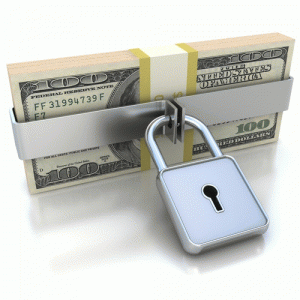Need An Orange County Bank Levy Served?
 Lots of people ask us to perform a bank levy to collect money owed on their court judgment. After all, bank levies are an effective means to obtain the court judgment paid at one time. It doesn’t matter if your judgment is from Small Claims Court or regular Civil Court, JPL Process Service can help.
Lots of people ask us to perform a bank levy to collect money owed on their court judgment. After all, bank levies are an effective means to obtain the court judgment paid at one time. It doesn’t matter if your judgment is from Small Claims Court or regular Civil Court, JPL Process Service can help.
But first, here are some things you need to consider:
#1 Do You Know Where the Debtor Banks?
In some cases, you might have an old check from the debtor, or perhaps they were a former buddy or business partner, and you already know where they bank. They may have closed the account to avoid you, but you cannot be sure until you check. There are a number of legal methods to discover an individual’s checking account. Do a search on Google or speak to your legal representative for support.
Tip: Most people bank at one of the significant banks in an area. If all else fails, put a levy on all of the banks at the same time. In many states other than California, it doesn’t matter which branch you levy upon. Any sort of levy on any branch is good for all accounts held by that bank at any place in the state. Here in California, you’ll need to do a bit more research.
#2 How Much Is It Going To Cost?
The price of levying a bank is minimal in most states. You need a Writ of Execution (sometimes called a Writ of Garnishment). The cost is anywhere from $25.00 in California to over a hundred dollars in Florida. Then you can request the sheriff serve the bank for you. The writ of execution is the instrument the sheriff uses to place the levy on the bank for you. The writ informs the sheriff how much your money judgment was for, what costs you’ve had so far applying for the judgment, and the amount of interest due on the judgment. This “writ” is stamped and signed by the court, and mailed back to you.
Many states have a website where you can get their writ online in a PDF file. Or you can purchase one for a small cost at sites like Legal Zoom. When you have the writ, just type in the details and the amounts. You’ll have to compute interest too, based upon your states annual interest rate.
Usually, when you complete the Writ of Execution, you’ll also have to fill out an accompanying form called a “Memorandum of Costs’. This “memo of prices” is where you validate the interest, as well as the reason for the additional court expenses you may have incurred, such as a judgment debtor assessment or process service.
This may seem complicated, but if you take action, it’s really quite easy. Complete the forms. Call your court to get the specific expense for sending the writ. The court might have a free legal adviser who can help you fill out the writ. Fill it out and either mail it in or take it to the court with a check to cover the charge.
Then call the sheriff to see exactly what the expense is for serving the bank or banks. In some counties, sheriffs are too busy to perform bank levies, so you’ll need to make use of a registered process server. They cost a bit more, but they’re worth it due to the fact that you can levy the bank on the exact day you wish.
#3 When Should I Levy The bank?
In a great deal of cases, you won’t know precisely when your debtor will have the most cash in the account. But in some cases you may know, specifically if you are aware that the debtor gets a direct deposit at certain times. If you know there is a direct deposit, it’s probably best to levy around the 2nd or the 16th of the month. Also, if your debtor is a tenant, then factor in when you think the property owner will cash the debtor’s rest payment. You want to levy prior to the check going through.
If the debtor has a residence and pays a mortgage, the home loan will most likely be due by the 15th of the month. Sometimes it’s best to levy around the 5th of the month. That’s probably when the most money is in the account. Even if the debtor banks at the? same bank that holds his home mortgage, the bank still needs to honor your levy by law.
#4 Levy the Appropriate Bank
If you’re going to levy the bank on a particular day of the month, then you should definitely use a licensed process server. They can do it at the specific day and time that you request whereas a sheriff will do it when they find the time to do it. After the bank is levied, be patient. The bank will freeze the account and all cash in it up to the amount of the writ. The bank will then hold the funds for roughly 15 days and then turn it over to the sheriff. The sheriff will then hold it for some time prior to sending it to you.
The debtor does have an opportunity to file a “Claim of Exemption,” stating that the cash in the account is exempt for whatever reason. This occurs in about 15% of the cases, but don’t worry about it happening in your case until it occurs. If it does, call the court to see what your options are.
Inform them you wish to file an opposition to the claim of exemption, and set a hearing. The debtor will need to appear in court and detail why the cash should be exempt. Usually the explanation isn’t valid, and the court will rule in your favor. It’s an added step and a little a hassle, but worth it to follow through.
Remember that nothing occurs quickly when dealing with government claims, so just be patient. The sheriff will alert you by mail how much money was levied and a check will arrive in about 30-45 days. Due to budget cuts in local counties, it may take even longer. Call the sheriff for the specific length of time.
If you’re searching for Orange County process servers that perform bank levies throughout the State of California, call JPL Process Service at (866) 754-0520 for quick turnaround, economical prices and the peace of mind your papers are served correctly and on time.






